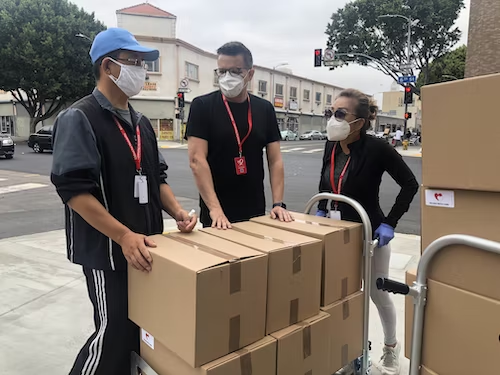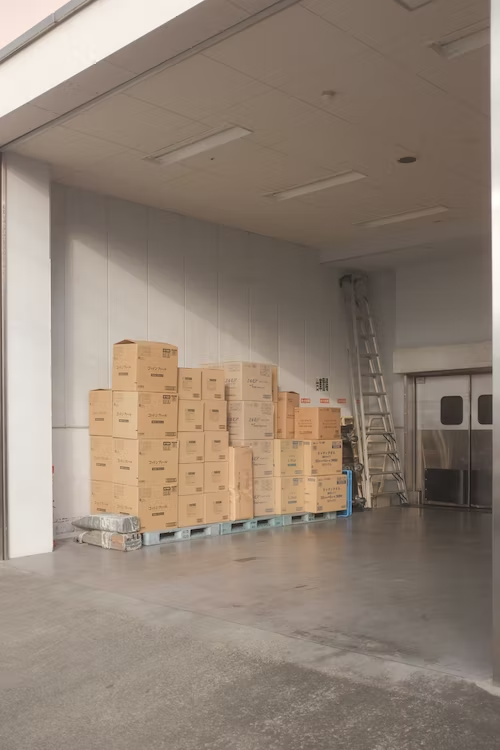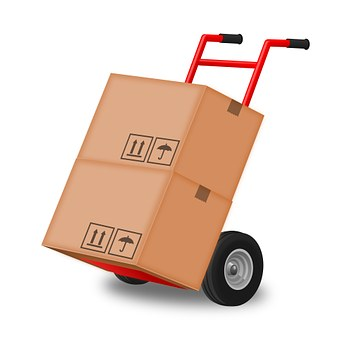Moving to a new home or office can be exciting but stressful and challenging, particularly when transferring delicate goods. Glassware, ceramics, and electronics are fragile things that require additional caution and attention to prevent harm when moving.
Although moving fragile things might be challenging, you can do it safely and successfully with proper planning and preparation. Whether you’re planning a local move or a long-distance move, it’s important to consider several key points, such as hiring professional movers, using proper packing materials and moving tools, and labeling your fragile items to ensure they are transported safely.
This article will examine the six points to consider for moving your fragile items safely.
Table of Contents
Seek A Professional Moving Service
Suppose you lack confidence in packing your fragile items or lack the time; professional moving services such as JD Movers can be valuable. With the necessary experience and skills, moving experts can pack your delicate commodities safely and securely to reduce the possibility of damage during transportation. They are familiar with using premium packaging supplies, such as bubble wrap and packing paper, to preserve fragile items.
In addition, professional movers also use specific methods for packing delicate objects, such as carefully wrapping each one and inserting foam to prevent moving during transportation. You can rest assured that your fragile items are in excellent hands and will arrive at your desired destination in the same condition as when they left by hiring professional moving services. This can provide you peace of mind and lessen your tension while relocating, letting you concentrate on other parts of the move.

Proper Packing
Another point to remember when moving fragile items in a protected and safe manner is proper packing. It’s essential to use high-quality proper packaging materials with added protection, such as foam inserts and packing paper, when moving fragile objects. This offers appropriate cushioning to the items and aids in avoiding damage.
Also, careful packing of fragile items through individual wrapping enhances their safety since it hinders them from rubbing against each other and causing damage. Each item has to be contained in a strong box and encased in packing materials like bubble wrap or packing peanuts. To guarantee that the weight is appropriately spread and prevent crushing or damage, heavier goods should be placed towards the bottom of the box with lighter items on top.
Additionally, selecting the appropriate choices in terms of size and type for each fragile item is another important aspect of proper packaging. Smaller boxes work better for heavier objects like magazines or glasses, whereas larger boxes should only be used for lightweight yet bulky items. Select sturdy boxes of materials like corrugated cardboard to avoid crushing or damage during transit.

Plan Ahead
Preparation is key to making sure that your fragile commodities are moved safely. You can ensure you have enough time to pack and ready your delicate goods for transport by making a strategy and schedule for your move.
A significant part of planning ahead is inventorying your fragile items and noting any unique requirements or concerns for their transportation. For instance, delicate items needing custom crates or temperature-controlled transport may need particular care during transit. By determining these requirements in advance, you can ensure you have the tools and resources required to move your fragile items securely.
Planning also involves renting a moving vehicle or hiring a reputable company in anticipation of your moving date. This can guarantee that you have the tools and assistance needed to transfer your fragile things on time.
Label As Fragile
Labeling fragile items during a move is crucial to ensure that your fragile items are handled carefully and transported safely. Clear labeling prevents your fragile items from being dropped, crushed, or handled clumsily during the move.
Each box carrying fragile objects has to be marked with the words like “Fragile” or “Handle with Care,” as well as arrows showing which end of the box should be facing up. This will notify movers to handle these boxes with additional care and ensure they are stacked to reduce the possibility of damage during transit.

Image source
Furthermore, properly marking the boxes containing fragile objects ensures you can more easily track them and decide which ones to unpack first when you reach your destination. This can save you the headache of going through a sea of unlabeled boxes, looking for fragile items, and ensuring they are unloaded securely and undamaged.
Consider Insurance
Considering insurance is a critical point to contemplate when moving fragile items. Despite taking every safety measure, such as proper packing and labeling, which can go a long way in protecting your fragile items during the move, tragedy can still occur, and the fragile items are highly prone to harm. You can shield yourself from the economic effects of any loss during the relocation by getting insurance coverage.
The majority of moving firms provide insurance options that cover damages during transit. Studying the policy specifics to protect your fragile things thoroughly is crucial. Also, discussing any queries or concerns with the moving company or insurance provider is vital to understand any restrictions or limits that may apply to specific property types, such as antiques, heavy machinery, and works of art.
Obtaining insurance coverage is a top-notch guarantee to ease your mind while transporting your fragile goods, as they will be secured in the event of damage.
Use Appropriate Moving Tools
Appropriate moving equipment is also a factor to consider in ensuring the safe moving of fragile items. With the use of proper equipment, the moving process can flow smoothly with less or no risk of the likelihood of damage to fragile items.
The hand truck is an essential tool for moving substantial fragile goods, which performs its role without lifting the items. This minimizes the possibility of falling or improperly handling fragile things in transit. In picking a hand truck, it’s crucial to go for one whose weight capacity is more than the weight of the object you are moving.

Image source
An additional helpful tool is the furniture sliders which can be used to move heavy furniture across the floors without causing any harm to them. They help reduce the possibility of furniture sustaining dents, scratches, or any other damage during the move.
Conclusion
Moving fragile items can be stressful and overwhelming. Still, with proper packaging and labeling, planning, appropriate moving equipment, ensuring the commodities, and looking for the services of professional movers, the process can be done smoothly with minimal stress. By adhering to the six points explained above, you can help enhance the safety of your fragile commodities and ensure that they reach your desired destination intact with no single scratch or damage on them.
Read: 6 Strategies for Effective Contract Management
